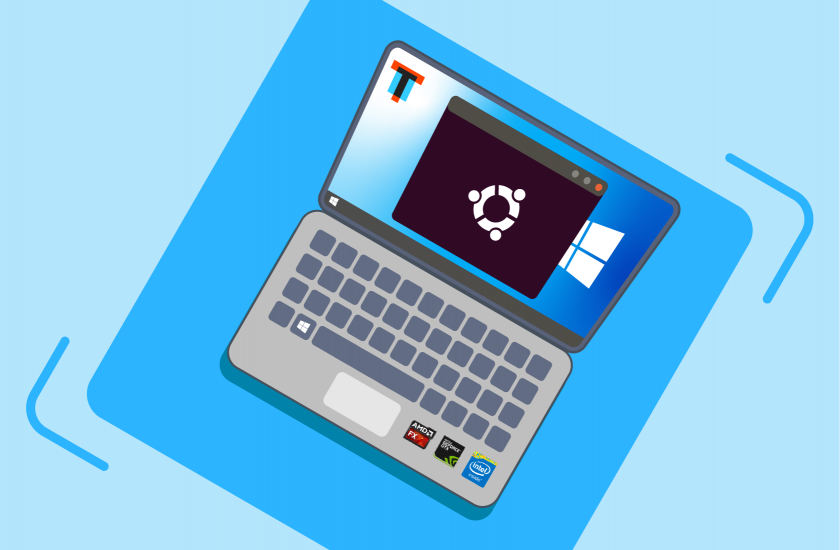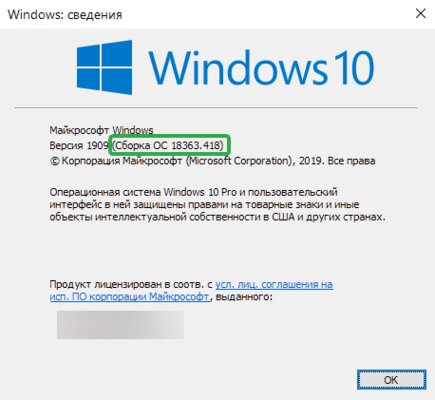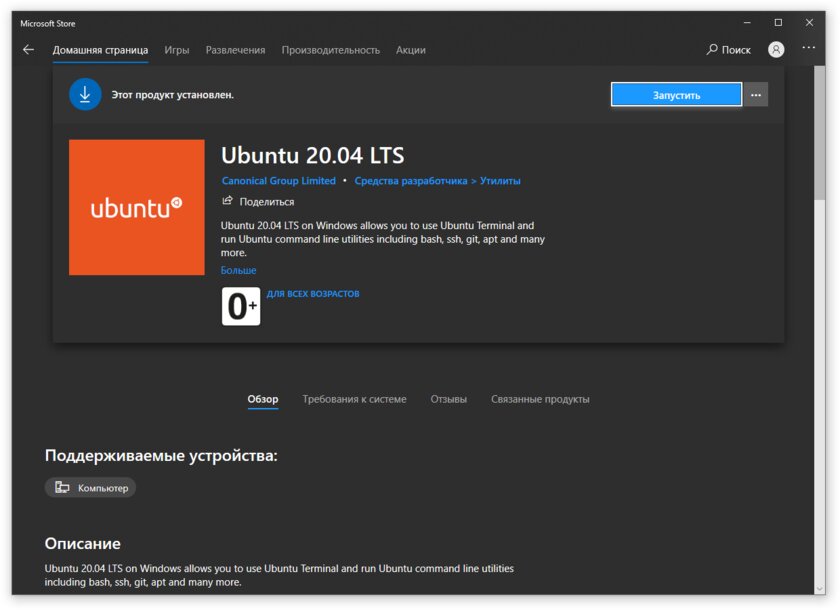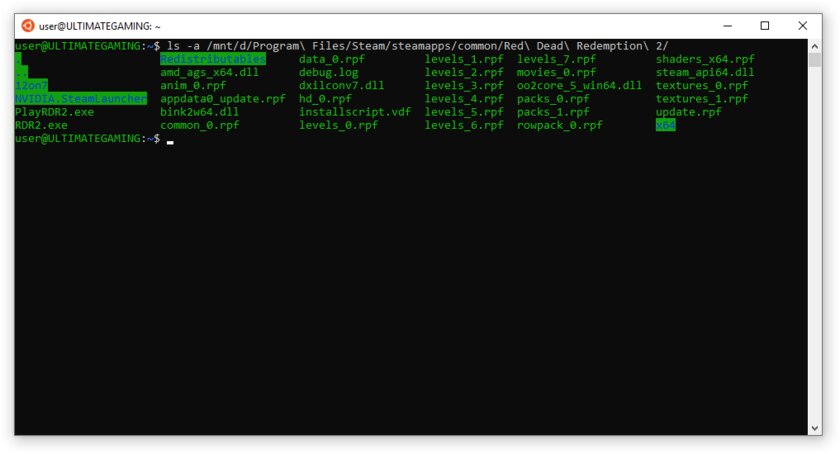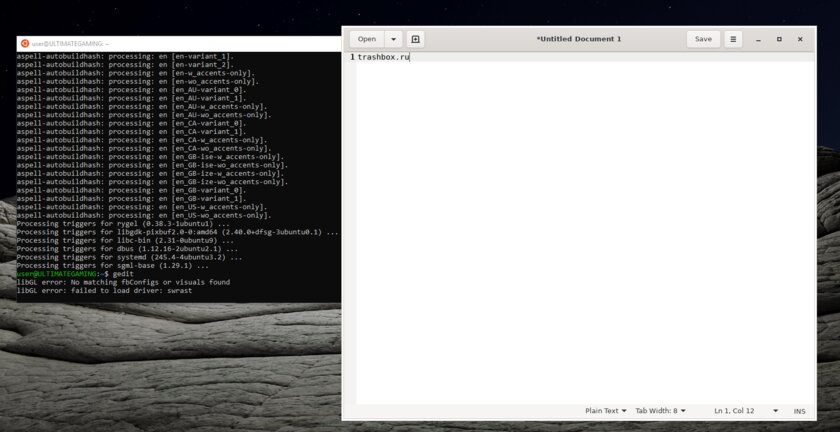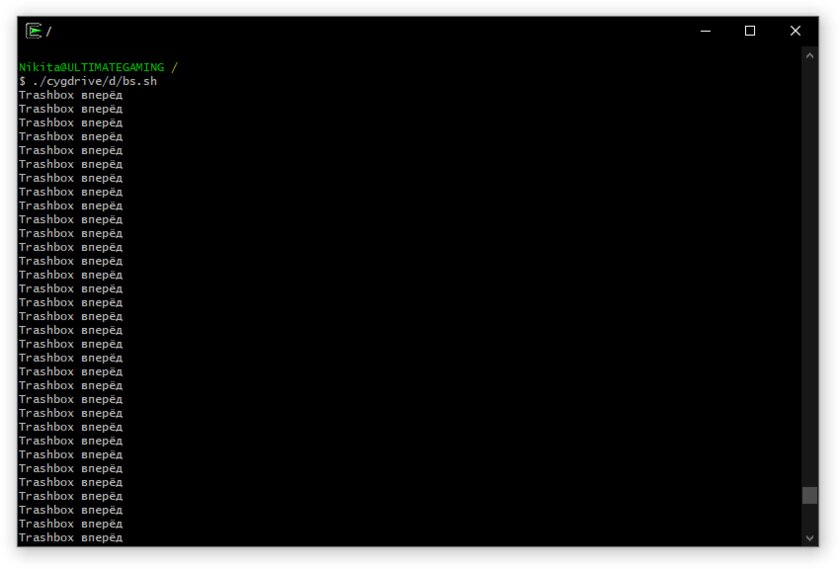- Как выполнять Linux-команды внутри Windows: официальный и сторонние способы
- WSL — официальная подсистема Linux внутри Windows
- CoreUtils — лёгкий инструмент для запуска базовых команд
- Cygwin — запуск команд и Bash-скриптов
- How to install Linux GUI apps on Windows 10
- Install Linux GUI apps via WSL on Windows 10
- Install or update WSL on Windows 10
- Install WSL2 on Windows 10
- Update WSL2 on Windows 10
- Related Stories
Как выполнять Linux-команды внутри Windows: официальный и сторонние способы
Под GNU/Linux-дистрибутивы создано огромное количество полезных и удобных инструментов и приложений для обычных пользователей и разработчиков. Далеко не всё из этого доступно на Windows, но, к счастью, для ОС от Microsoft есть решения, исправляющие эту проблему.
WSL — официальная подсистема Linux внутри Windows
В Windows 10 существует крайне полезная вещь под названием Windows Subsystem for Linux (WSL). Она позволяет использовать GNU/Linux-среду прямо в Windows и запускать не только команды, но и, например, Bash-скрипты. Для использования WSL необходимо следовать инструкции ниже.
Шаг 1. Проверьте, подходит ли текущая версия Windows требованиям. Для этого нажмите сочетание клавиш Win+R, затем введите winver. Найдите строку «Сборка ОС» — она должна быть свежее версии 14316.
Шаг 2. Запустите стандартную утилиту PowerShell от имени администратора и введите в ней команду для включения WSL:
Шаг 3. Если версия Windows, определённая в первом пункте, свежее 18362, вы можете установить WSL 2, который в разы быстрее первой версии и обладает доработанным ядром. Введите команду ниже, если нужно установить WSL 2:
После этого скачайте и установите пакет обновления с официального сайта.
Шаг 4. Перезагрузите компьютер. Если была произведена установка WSL 2, введите в PowerShell от имени администратора следующую команду:
Шаг 5. После перезагрузки откройте фирменный магазин приложений Microsoft Store и найдите подходящий GNU/Linux-дистрибутив. Самым популярным является Ubuntu — вы можете установить любую версию из представленных в Microsoft Store.
Шаг 6. Как только установка завершится, найдите дистрибутив в меню «Пуск» и запустите его.
Шаг 7. Пройдите этап первоначальной настройки, введя имя нового пользователя и придумав пароль.
Шаг 8. Теперь различные GNU/Linux-команды можно выполнять, запустив дистрибутив, либо введя в командной строке wsl . Например, для просмотра всех файлов в текущей директории достаточно в командной строке выполнить wsl ls -a.
Обращу внимание на то, что путь к дискам в WSL отличается от такового в Windows. Вместо привычного C:/ используйте /mnt/c/. Также не забывайте про экранирование пробелов с помощью символа \ — это также пригодится при вводе путей к файлам.
Помимо выполнения базовых команд, с помощью WSL можно даже запускать приложения с графическим интерфейсом. Правда, рассчитывать на большое количество поддерживаемых подобных программ не стоит.
Шаг 1. Загрузите X-сервер и установите его.
Шаг 2. Запустите его с помощью ярлыка на рабочем столе. В открывшемся окне выберите вариант Multiple windows, затем Start no client. Завершите настройку кнопкой Finish.
Шаг 3. Откройте дистрибутив через меню Пуск и выполните команду export DISPLAY=:0
Шаг 4. Запустив приложение с графическим интерфейсом в WSL, вы увидите новое окно прямо в Windows.
CoreUtils — лёгкий инструмент для запуска базовых команд
Плюс данной утилиты — возможность запуска не только на Windows 10, но и на более старых версиях ОС. Кроме того, она легка и не занимает много места. Не обошлось без недостатков — программа скудна на функционал и не обновлялась очень давно. Она не только не умеет запускать скрипты и приложения с GUI, но и поддерживает лишь самые базовые GNU/Linux-команды. Установка CoreUtils весьма проста.
Шаг 1. Скачайте утилиту с официального сайта.
Шаг 2. Следуйте инструкциям установщика.
Шаг 3. Откройте «Панель управления», в разделе «Система и безопасность» выберите пункт «Система». На панели слева откройте «Дополнительные параметры системы». Нажмите кнопку «Переменные среды» и в открывшемся окне найдите область с заголовком «Системные переменные». В случае, когда там есть переменная Path, выберите её, нажмите «Изменить» и далее создайте новую строку. Содержимым этой строки должен быть путь к папке, который был указан при установке. Если вы ничего не меняли, то введите следующее:
Переменной Path нет? Тогда для начала создайте её кнопкой «Создать», затем в поле имени введите Path, а в поле значения — строку выше.
Шаг 4. Запустите командную строку и выполняйте команды прямо там.
Cygwin — запуск команд и Bash-скриптов
Ещё одна утилита, схожая с CoreUtils, но обладающая более широким функционалом — в том числе и возможностью запуска скриптов. Из минусов — немалый вес и более сложная установка. Разумеется, не идёт ни в какое сравнение с максимально удобным WSL, но для базовых команд вполне подойдёт.
Шаг 1. Загрузите Cygwin и запустите установку.
Шаг 2. Выберите Install from Internet, укажите директории для установки и загрузки пакетов, а также любой подходящий сайт из списка для скачивания файлов.
Шаг 3. В процессе установки можете выбрать необходимые пакеты, либо сразу нажать «Далее», оставив базовый набор.
Шаг 4. Откройте «Панель управления», в разделе «Система и безопасность» выберите пункт «Система». На панели слева откройте «Дополнительные параметры системы». Нажмите кнопку «Переменные среды» и в открывшемся окне найдите область с заголовком «Системные переменные». В случае, когда там есть переменная Path, выберите её, нажмите «Изменить» и далее создайте новую строку. Содержимым этой строки должен быть путь к папке, который был указан при установке. Если вы ничего не меняли, то введите следующее:
Переменной Path нет? Тогда для начала создайте её кнопкой «Создать», затем в поле имени введите Path, а в поле значения — строку выше.
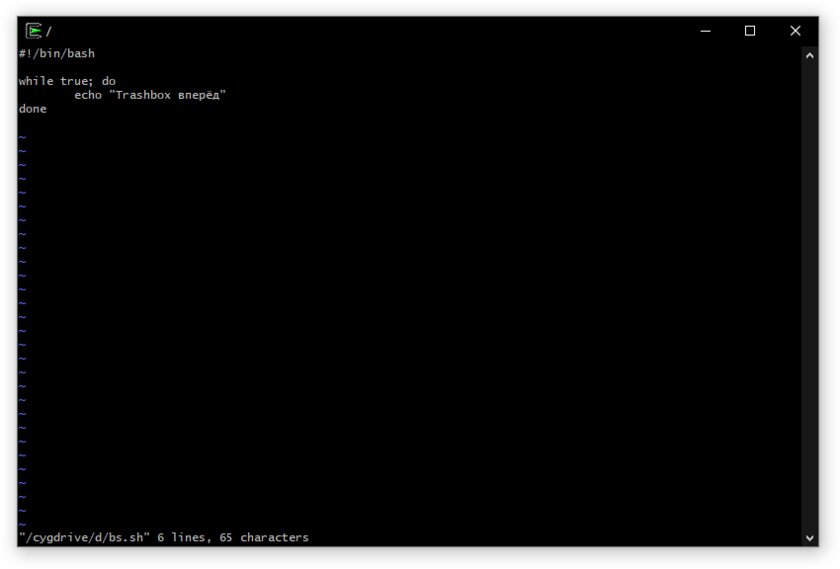
Шаг 5. Команды можно выполнять как через командную строку, так и через специальный терминал.
Шаг 6. Для удаления Cygwin достаточно удалить папку, в которую программа была установлена, а также (по желанию) значение из переменной Path по методу, обратному тому, что был описан в 4 шаге (не удаляйте саму переменную).
How to install Linux GUI apps on Windows 10
Microsoft brings support to run Linux GUI apps on Windows 10 through WSL, and here’s how.
- Linux GUI apps are installed using the sudo apt-get install command inside the WSL distro.
- Once the GUI app is installed, you can launch it from the Start menu or use a command.
- The feature requires installing WSL2 with the wsl —install command on build 21364 or higher.
On Windows 10, you can now install Linux GUI apps (almost natively) through Windows Subsystem for Linux (WSL), and these instructions will show you how.
Although you could run Linux apps on Windows 10 with WSL for a long time, the system was limited to command-line tools and applications. However, starting with build 21364 and higher releases (with a special update to the WSL integration), Microsoft is finally bringing GUI (graphical user interface) support to run your favorite Linux applications with the mouse and keyboard.
The new feature is to develop and test your applications on Linux without needing a virtual machine, but you can use it for anything. The implementation even includes support for speakers and microphones, so if you install a media app, the peripherals will pass through and appear in the app. GPU accelerated 3D graphics are also supported to run any app that needs to do complex 3D rendering leveraging OpenGL.
When using this feature, there is no need to start an X server manually since WSL automatically starts a “companion system distro,” which includes a Wayland, X server, pulse audio server, and all the required components. Then after you close the app and the WSL session, the system distro will end automatically.
This guide will teach you the steps to download and install graphical Linux applications on Windows 10. You can also watch this video tutorial with the step-by-step to complete this process.
Install Linux GUI apps via WSL on Windows 10
To install a Linux GUI app on Windows 10, use these steps:
sudo apt-get install APP-NAME -y
In the command, replace APP-NAME with the graphical app you want to install. This example installs the gedit text editor app:
sudo apt-get install gedit -y
Once you complete the steps, the app will install and register in the Start menu, which means that you can launch the app by running the app’s name in the Windows Subsystem for Linux (WSL) console or from the Start menu.
The above instructions outline the steps to install a simple app from known repositories, but depending on the app, the instructions may differ. The good news is that the installation process is the same as any other Linux application. You can follow the developer steps to install virtually any application, such as VLC, Audacity, web admin, etc.
If you launch the Linux GUI app from the Windows 10 Start menu, you will find the entries in the “Recently added” list, or you can also find them inside the (distro name) folder below the Linux distro entry.
As you launch the app, the virtual machine will spin, and it will run (in a few seconds) without needing to open the WSL console. You will also notice that the taskbar will show the icon with a Linux logo, indicating that you are not running a Windows 10 application.
The experience of using a graphical Linux app on Windows 10 feels native, but it’s not. The app renders with all the Linux visual styles for the frame, menus, and other elements, and there is even a shadow around the edge, and every window works independently.
However, it is a remote desktop connection, which Microsoft is leveraging with the RemoteApp feature built into the operating system.
Install or update WSL on Windows 10
The ability to run Linux GUI apps requires the Windows Subsystem for Linux 2 integration, which means you must have the latest feature and distribution version to install and run your applications.
If you have WSL2 already installed, then you will need to update the feature.
Before installing or updating WSL2, the device must have the Windows 10 build 21364 or higher release.
Also, as a prerequisite, you must install the driver to enable a virtual GPU (vGPU) to use hardware-accelerated OpenGL rendering before installing applications. Here are the download links:
Install WSL2 on Windows 10
These instructions will show you how to install WSL2 and the Ubuntu Linux distribution to get started running GUI apps.
To install WSL2 components to run Linux GUI apps, use these steps:
- Open Start.
- Search for Command Prompt, right-click the top result, and select the Run as administrator option.
- Type the following command to install the WSL 2 and press Enter:

Once you complete the steps, the required Linux components will install automatically, and the command will also download the latest version of the Ubuntu Linux distro.
After the installation, you only need to open the distro from the Start menu and continue with the on-screen directions to complete the setup.
You can use these instructions if you want to install a different distro to run apps instead of Ubuntu.
Update WSL2 on Windows 10
If you already have the Windows Subsystem for Linux 2 installed, confirm the system has the latest updates to run GUI apps.
To update WSL2 to download the GUI support for Linux apps, use these steps:
- Open Start.
- Search for Command Prompt, right-click the top result, and select the Run as administrator option.
- Type the following command to update the Windows Subsystem for Linux 2 and press Enter:
Type the following command to force restart WSL2 and press Enter:
After you complete the steps, the latest version of WSL will download automatically. Then you can use the above instructions to install Linux GUI apps.
We may earn commission for purchases using our links to help keep offering the free content. Privacy policy info.
All content on this site is provided with no warranties, express or implied. Use any information at your own risk. Always backup of your device and files before making any changes. Privacy policy info.
Since you are here.
I’ve got a small favor to ask. This is an independent site, and producing content takes a lot of hard work. Although more people are reading Pureinfotech, many use adblocker. Thus advertising revenue is falling fast. And unlike many other sites, there is no paywall blocking readers here. So you can see why your help is needed. If everyone who finds this website useful and helps to support it, the future would be much more secure. Thank you.
If you use adblocker, please disable it for this site.
$125 raised so far by 11 people.
